- Identifying Spider Mite Infestations
- Physical Appearance
- Signs of Infestation
- Plant Species Affected
- Conclusion
- Understanding the Damage Caused by Spider Mites
- Natural Predators of Spider Mites
- 1. Ladybugs (Coccinellidae)
- 2. Minute Pirate Bugs (Orius spp.)
- 3. Predatory Mites (Phytoseiidae)
- 4. Lacewings (Chrysopidae)
- 5. Predatory Thrips (Amblyseius spp.)
- 6. Predatory Beetles (Stethorus spp.)
- Preventive Measures to Avoid Spider Mite Infestations
- 1. Regularly inspect plants
- 2. Maintain proper humidity levels
- 3. Keep plants clean
- 4. Quarantine new plants
- 5. Avoid over-fertilization
- 6. Use biological control methods
- 7. Rotate plants
- 8. Avoid overwatering
- 9. Use organic insecticides
- Cultural Practices to Reduce Spider Mite Populations
- 1. Maintain Optimal Plant Health
- 2. Proper Plant Spacing
- 3. Weed Control
- 4. Introduce Beneficial Insects
- 5. Hose Down Plants
- 6. Monitor and Early Detection
- Chemical Control Options for Spider Mites
- 1. Acaricides
- 2. Miticides
- 3. Systemic Insecticides
- 4. Biological Control Agents
- 5. Integrated Pest Management (IPM)
- Organic Spider Mite Control Methods
- 1. Biological Control
- 2. Cultural Control
- 3. Horticultural Oils
- 4. Essential Oils
- 5. Organic Sprays and Mists
- 6. Companion Planting
- Monitoring and Regular Inspections for Spider Mite Infestations
- Q&A:
- What are spider mites and why are they a problem?
- What are some signs of a spider mite infestation?
- How can I prevent spider mite infestations in my garden?
- What are some natural predators of spider mites?
- What are some chemical control options for spider mites?
- Can spider mites cause harm to humans?
- How long does it take to get rid of a spider mite infestation?
- Video: Get Rid of Spider Mites
Spider mites are tiny insects that belong to the arachnid family. Despite their small size, they can cause significant damage to plants and crops. These pests feed on the sap of plants, sucking out valuable nutrients and leaving a trail of destruction in their wake. Spider mite infestations can be a common problem for gardeners, farmers, and greenhouse owners, but there are effective measures that can be taken to manage and control these pests.
One of the first steps in spider mite control is early detection. These pests often go unnoticed until significant damage has already been done. By regularly inspecting plants and crops for signs of spider mites, such as small yellow or brown spots on leaves, fine silk webbing, or a general decline in plant health, infestations can be identified and addressed before they get out of hand.
Once spider mites have been detected, there are several control methods that can be employed. One effective measure is biological control using natural enemies of spider mites, such as predatory mites or ladybugs. These beneficial insects feed on spider mites and can help to keep their populations in check. Introducing these natural enemies into the affected area can be an environmentally friendly and effective way to control spider mites.
In addition to biological control, other measures can also be taken to manage spider mite infestations. These include cultural practices such as pruning affected plant parts, disposing of infested plants, and improving overall plant health through proper watering, fertilization, and pest management. Chemical control methods, such as insecticidal soaps or pesticides, may also be used as a last resort if other options have been unsuccessful.
In conclusion, spider mite control requires early detection, appropriate management methods, and a combination of cultural and biological control measures. By being proactive and implementing these effective measures, infestations can be managed and crops can be protected from the devastating effects of spider mites.
Identifying Spider Mite Infestations
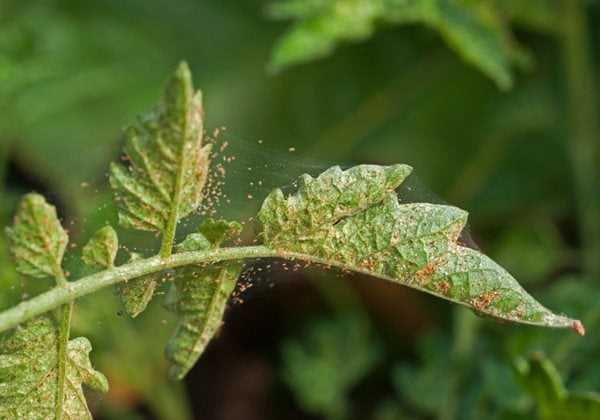
If you suspect that your plants may be infested with spider mites, it is important to quickly identify the presence of these tiny pests. Spider mites are very small arachnids that belong to the Tetranychidae family. They are known for their ability to spin fine silk webs, which can be seen on the infested plants.
Physical Appearance
Spider mites are usually not visible to the naked eye, but you can identify them by their physical characteristics. They are typically about 0.5 millimeters in size and have eight legs, similar to other spiders. However, their bodies are oval-shaped and can vary in color from light green or yellow to red or brown, depending on the species.
One way to confirm the presence of spider mites is to gently tap an infested leaf over a white piece of paper. If you see small moving specks that are about the size of a grain of pepper, these are likely spider mites.
Signs of Infestation
Spider mite infestations can cause visible damage to plants. Some common signs of infestation include:
- Yellowing or discolored leaves: Spider mites feed on the chlorophyll in plant leaves, causing them to turn yellow or develop small white or brown spots.
- Silver or bronze-colored webbing: Spider mites spin fine silk webs on the leaves, which can give the affected plants a silver or bronze appearance.
- Stunted growth: Infested plants may show signs of stunted growth, with smaller leaves and weaker stems.
- Leaf drop: Severe infestations can cause leaves to dry out and eventually drop from the plant.
Plant Species Affected
Spider mites are known to infest a wide range of plants, including vegetables, fruits, ornamental flowers, and houseplants. Some common plants that are susceptible to spider mite infestations include tomatoes, cucumbers, roses, and strawberries. However, spider mites can also attack other plants, so it is important to regularly inspect your plants for any signs of infestation.
Conclusion
Identifying spider mite infestations early is crucial for effective pest management. By understanding their physical appearance and the signs of infestation, you can take proactive measures to control these tiny pests and prevent further damage to your plants.
Understanding the Damage Caused by Spider Mites
Spider mites are tiny pests that can cause significant damage to plants and crops. They belong to the arachnid family and are closely related to spiders and ticks. While they may be small, their damage can be severe and devastating if left untreated.
1. Feeding Habits:
Spider mites feed by piercing the surface of plant leaves and sucking out the sap. This feeding behavior causes damage to the plants in several ways:
- Yellowing of Leaves: Spider mites extract chlorophyll from the leaves, causing them to turn yellow. This discoloration can severely affect the plant’s ability to photosynthesize and produce energy.
- Stippling: As spider mites feed, they leave behind small puncture marks on the leaf surface. These marks, known as stippling, appear as tiny white or yellow spots. If left untreated, stippling can lead to leaf discoloration and ultimately, leaf drop.
- Webbing: Spider mites also produce fine silk webbing to protect themselves and facilitate movement. This webbing can cover the leaves, stems, and buds, interfering with the plant’s growth and development.
2. Reduced Plant Vigor:
The damage caused by spider mites weakens the plant’s overall health and vigor. Over time, infested plants may show symptoms such as stunted growth, reduced flower and fruit production, and overall decline in plant health. Spider mite-infested plants are also more susceptible to other diseases and pests.
3. Economic Impact:
The economic impact of spider mite infestations is significant, particularly in agriculture. Spider mites can infest a wide range of crops, including fruits, vegetables, ornamentals, and field crops. If left unchecked, spider mites can cause yield losses, reduced quality of produce, and increased production costs due to the need for additional pesticide applications or other management practices.
| Preventing and Managing Spider Mite Infestations |
|---|
| Regularly inspect plants for signs of spider mite infestation, such as webbing, stippling, and yellowing leaves. |
| Introduce beneficial insects, such as ladybugs and predatory mites, to help control spider mite populations. |
| Practice good plant hygiene by removing infested plant material and disposing of it properly. |
| Apply organic or chemical pesticides as a last resort, following label instructions and considering the potential impact on beneficial insects. |
| Monitor environmental conditions, as spider mite populations tend to thrive in hot and dry conditions. Adequate watering and maintaining humidity levels can help prevent infestations. |
Natural Predators of Spider Mites
One of the most effective ways to control spider mite infestations is to introduce natural predators into the affected area. These predators are beneficial insects that feed on spider mites, helping to keep their population under control and reduce the need for chemical interventions. Here are some of the common natural predators of spider mites:
1. Ladybugs (Coccinellidae)
Ladybugs are well-known predators of many garden pests, including spider mites. They feed on both the eggs and adult mites, effectively reducing their numbers. Ladybugs are attracted to areas with abundant spider mites, making them an excellent natural solution for controlling infestations.
2. Minute Pirate Bugs (Orius spp.)
Minute pirate bugs are small, predatory bugs that can play a significant role in spider mite control. They feed on various pests, including spider mites, thrips, and aphids. Minute pirate bugs can be attracted to the garden by planting suitable flowering plants and providing a diverse habitat.
3. Predatory Mites (Phytoseiidae)
Predatory mites are natural enemies of spider mites and are widely used in integrated pest management programs. These mites feed on all life stages of spider mites and can quickly suppress infestations. Different species of predatory mites are available, each with its preferred prey and environmental requirements.
4. Lacewings (Chrysopidae)
Lacewings are delicate insects that consume various garden pests, including spider mites. Both the larvae and adult lacewings actively feed on spider mites, making them valuable predators. Providing a diverse range of flowering plants can attract lacewings to the garden.
5. Predatory Thrips (Amblyseius spp.)
Predatory thrips are tiny insects that are effective natural predators of spider mites. They feed on the eggs and early stages of spider mites, helping to control their population. Predatory thrips can be introduced into the garden as part of a biological control program.
6. Predatory Beetles (Stethorus spp.)
Predatory beetles, specifically species from the Stethorus genus, are effective predators of spider mites. These beetles feed on all life stages of spider mites and can significantly reduce infestations. They are commonly used in greenhouse crops as a natural control method.
By attracting and maintaining populations of natural predators, gardeners can effectively manage spider mite infestations without resorting to harmful chemicals. Incorporating diverse plant species and creating a supportive habitat will encourage these helpful insects to thrive and keep spider mites in check.
Preventive Measures to Avoid Spider Mite Infestations
1. Regularly inspect plants
One of the most important preventive measures to avoid spider mite infestations is to regularly inspect your plants. Look for any signs of mites, such as fine webbing, discolored leaves, or small yellow or white spots. Early detection can help you take immediate action before the infestation spreads.
2. Maintain proper humidity levels
Spider mites thrive in dry conditions, so maintaining proper humidity levels can help prevent infestations. Use a humidifier to increase humidity if necessary, especially during drier seasons or in rooms with low humidity.
3. Keep plants clean
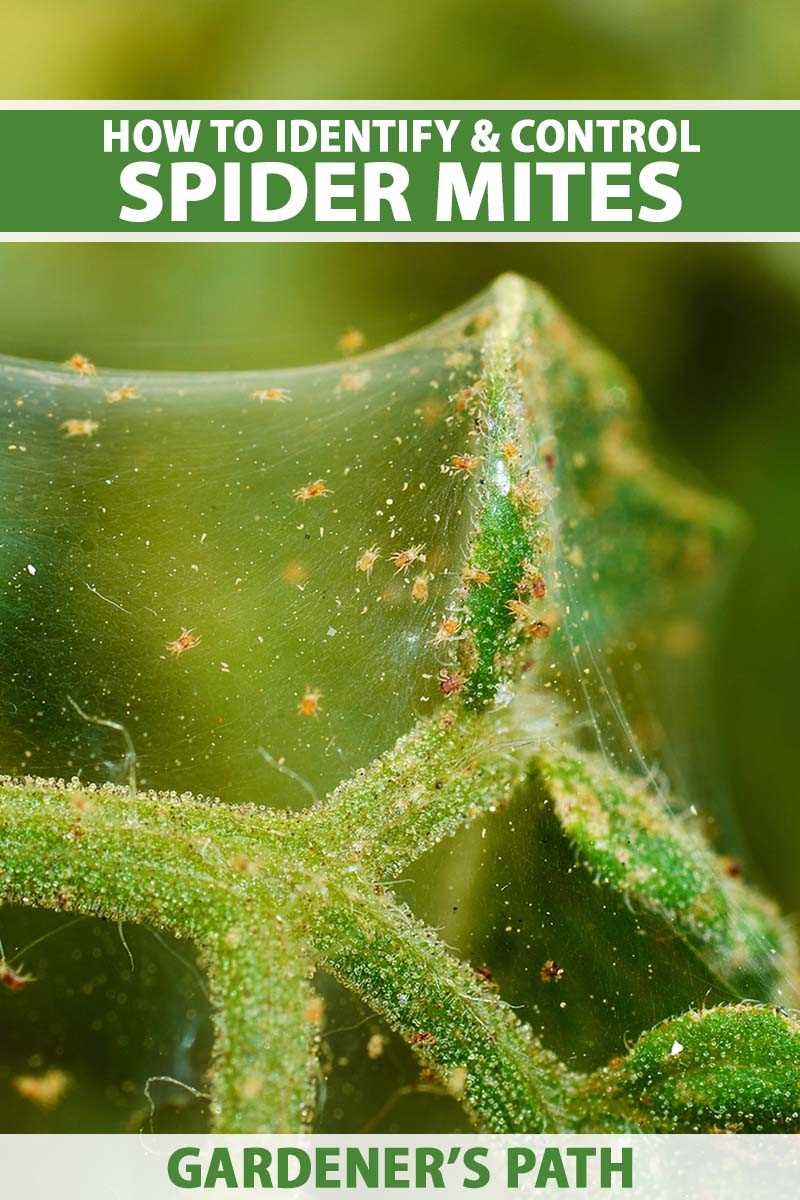
Spider mites can hide and reproduce in debris, dust, and dead leaves, so keeping your plants clean is essential for preventing infestations. Regularly clean your plants by gently wiping the leaves with a damp cloth or using a hand-held vacuum cleaner to eliminate any potential hiding spots for spider mites.
4. Quarantine new plants
Before introducing new plants to your collection, quarantine them for a few weeks to ensure they are not carrying any spider mites or other pests. This will help prevent the infestation from spreading to your existing plants.
5. Avoid over-fertilization
Over-fertilizing plants can lead to increased susceptibility to spider mite infestations. Avoid using excessive amounts of fertilizer and follow proper fertilization guidelines to maintain plant health and reduce the risk of infestations.
6. Use biological control methods
Introducing natural predators or biological control agents, such as ladybugs or predatory mites, can help control spider mite populations. These predators feed on the mites and can help reduce their numbers. Consult with local gardening experts or pest control professionals for advice on suitable biological control methods for your situation.
7. Rotate plants
Rotating the location of your plants can help prevent spider mite infestations. Spider mites can easily spread from plant to plant, so periodically moving your plants to different areas can disrupt their lifecycle and make it harder for them to establish infestations.
8. Avoid overwatering
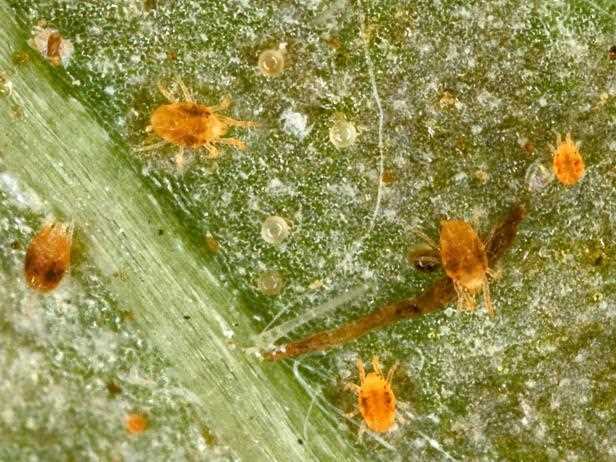
Overwatering your plants can create humid conditions that are conducive to spider mite infestations. Follow proper watering practices and ensure good drainage to prevent excessive soil moisture, which can attract mites.
9. Use organic insecticides
If preventive measures fail and you still experience a spider mite infestation, consider using organic insecticides as a last resort. These products are less harmful to beneficial insects and the environment. Always follow the instructions on the product label and use caution when applying any insecticides.
By implementing these preventive measures, you can significantly reduce the risk of spider mite infestations and maintain the health and beauty of your plants.
Cultural Practices to Reduce Spider Mite Populations
Spider mites can be a persistent problem in gardens and agricultural settings, but there are several cultural practices that can help reduce their populations and prevent infestations from spreading. By implementing these practices, growers can create an environment that is less favorable for the growth and reproduction of spider mites.
1. Maintain Optimal Plant Health
Healthy plants are less susceptible to spider mite infestations, so it is important to provide them with optimal growing conditions. This includes providing adequate water, nutrients, and sunlight. Regularly inspect plants for any signs of stress or disease and address them promptly to ensure the plant’s overall health.
2. Proper Plant Spacing
Crowded plants provide a favorable environment for spider mites to thrive. To reduce the risk of infestations, make sure to provide adequate spacing between plants. This allows for better air circulation and makes it more difficult for spider mites to move from plant to plant.
3. Weed Control
Weeds can serve as hosts for spider mite populations, so it is important to keep the garden area free from weeds. Regularly remove any weeds that may be growing near or among the cultivated plants to prevent spider mites from spreading and infesting the garden.
4. Introduce Beneficial Insects
There are several predatory insects that feed on spider mites, such as ladybugs and predatory mites. Introducing these beneficial insects into the garden can help keep spider mite populations under control. Consider purchasing and releasing these insects, especially in areas where spider mites are a recurring problem.
5. Hose Down Plants
Regularly hosing down plants with a strong jet of water can help dislodge and remove spider mites from their feeding sites. This can be done outdoors or in a controlled indoor environment, such as a greenhouse. Make sure to target the undersides of leaves, as this is where spider mites often congregate.
6. Monitor and Early Detection
Regular monitoring of plants is crucial for early detection of spider mite infestations. Inspect the plants frequently for any signs of spider mites, such as webbing, stippling on leaves, or yellowing of foliage. If any signs of infestation are detected, take immediate action to prevent the spread of spider mites to other plants.
By implementing these cultural practices, growers can effectively reduce spider mite populations and minimize the damage they cause. It is important to continue these practices consistently, as spider mites are a persistent pest that can quickly reproduce and infest plants.
Chemical Control Options for Spider Mites
Although chemical control should be used as a last resort, it can be effective in managing spider mite infestations. There are several chemical options available, each with its own pros and cons. It is important to carefully consider the specific needs of your plants, as well as the potential risks and benefits associated with each chemical.
1. Acaricides
Acaricides are pesticides specifically designed to target mites. They can be effective in controlling spider mite populations, but they may also have negative impacts on beneficial insects and the environment. It is crucial to carefully follow the instructions and safety precautions provided by the manufacturer when using acaricides.
2. Miticides
Miticides are another type of pesticide formulated specifically for mites. They can be effective in controlling spider mites and may have fewer negative effects on beneficial insects. However, as with any chemical control option, it is important to use miticides judiciously and in accordance with label instructions.
3. Systemic Insecticides
Systemic insecticides are chemicals that are absorbed by plants and distributed throughout their tissues. These insecticides can provide long-lasting protection against spider mites, as the mites feed on the treated plant material. However, systemic insecticides may also have negative effects on beneficial insects and other non-target organisms.
4. Biological Control Agents
Biological control agents, such as predatory mites or beneficial insects, can be used as a more environmentally friendly alternative to chemical control. These organisms prey on spider mites, helping to reduce infestations naturally. Biological control can be an effective option, especially when used preventively or in combination with other control methods.
5. Integrated Pest Management (IPM)
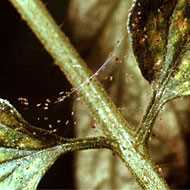
Implementing an integrated pest management (IPM) approach can help reduce reliance on chemical control methods. IPM involves combining multiple control tactics, including cultural practices, biological control agents, and selective chemical control, to manage pest populations effectively. By using a combination of methods, the reliance on chemical control can be minimized, reducing potential negative impacts.
| Control Option | Pros | Cons |
|---|---|---|
| Acaricides | – Specifically targeting mites – Can provide quick and effective control | – Potential negative effects on beneficial insects – Environmental concerns |
| Miticides | – Designed specifically for mites – Potential less impact on beneficial insects | – Risk of harm to non-target organisms – Environmental concerns |
| Systemic Insecticides | – Long-lasting protection – Convenient application | – Negative effects on beneficial insects and non-target organisms – Environmental concerns |
| Biological Control Agents | – Environmentally friendly – Can provide long-term control | – May require time and effort to establish populations – Limited effectiveness for severe infestations |
| Integrated Pest Management (IPM) | – Minimizes reliance on chemical control – Can be used in combination with other methods | – Requires knowledge and careful monitoring – Time and labor-intensive |
Organic Spider Mite Control Methods
Spider mites are tiny pests that can cause significant damage to plants in both indoor and outdoor settings. While chemical pesticides are commonly used to control spider mite infestations, they can have negative effects on the environment and human health. Organic spider mite control methods offer a safer and more sustainable approach to managing these pests.
1. Biological Control
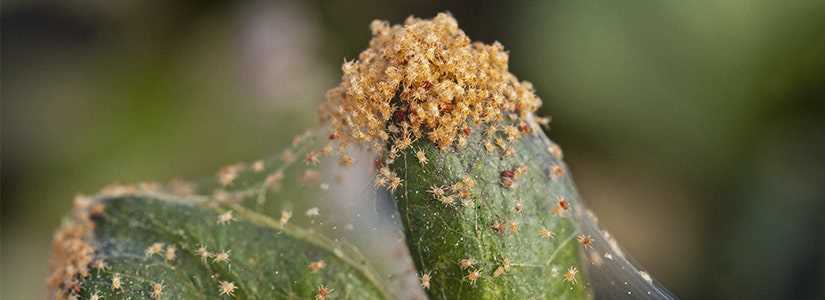
One effective organic method for controlling spider mites is through the use of natural predators. Many beneficial insects, such as ladybugs, lacewings, and predatory mites, feed on spider mites and can help keep their populations in check. Introducing these predators into your garden or greenhouse can be an effective way to control spider mites without the use of chemicals.
2. Cultural Control
Proper cultural practices can play a significant role in preventing and managing spider mite infestations. Regularly inspecting plants for signs of spider mites and promptly removing any infested leaves or plants can help prevent the pests from spreading. Additionally, maintaining proper plant nutrition and watering practices can help keep plants healthy and more resistant to spider mite damage.
3. Horticultural Oils
Horticultural oils, such as neem oil or insecticidal soap, can be effective in controlling spider mites. These oils suffocate the pests by coating their bodies and interfere with their ability to feed and reproduce. When using horticultural oils, it is important to thoroughly cover all plant surfaces, including the underside of leaves, where spider mites often congregate.
4. Essential Oils
Several essential oils, such as peppermint oil, rosemary oil, and clove oil, have shown promise in repelling and killing spider mites. These oils can be diluted with water and sprayed onto plants to deter spider mites from infesting them. However, it is important to test the oils on a small area of the plant before applying them more widely, as some plants may be sensitive to certain oils.
5. Organic Sprays and Mists
There are a variety of organic sprays and mists available on the market that are specifically formulated to control spider mites. These products often contain ingredients such as plant extracts, beneficial bacteria, or fungi that target spider mites while being safe for plants, humans, and beneficial insects. Follow the product instructions carefully for best results.
6. Companion Planting
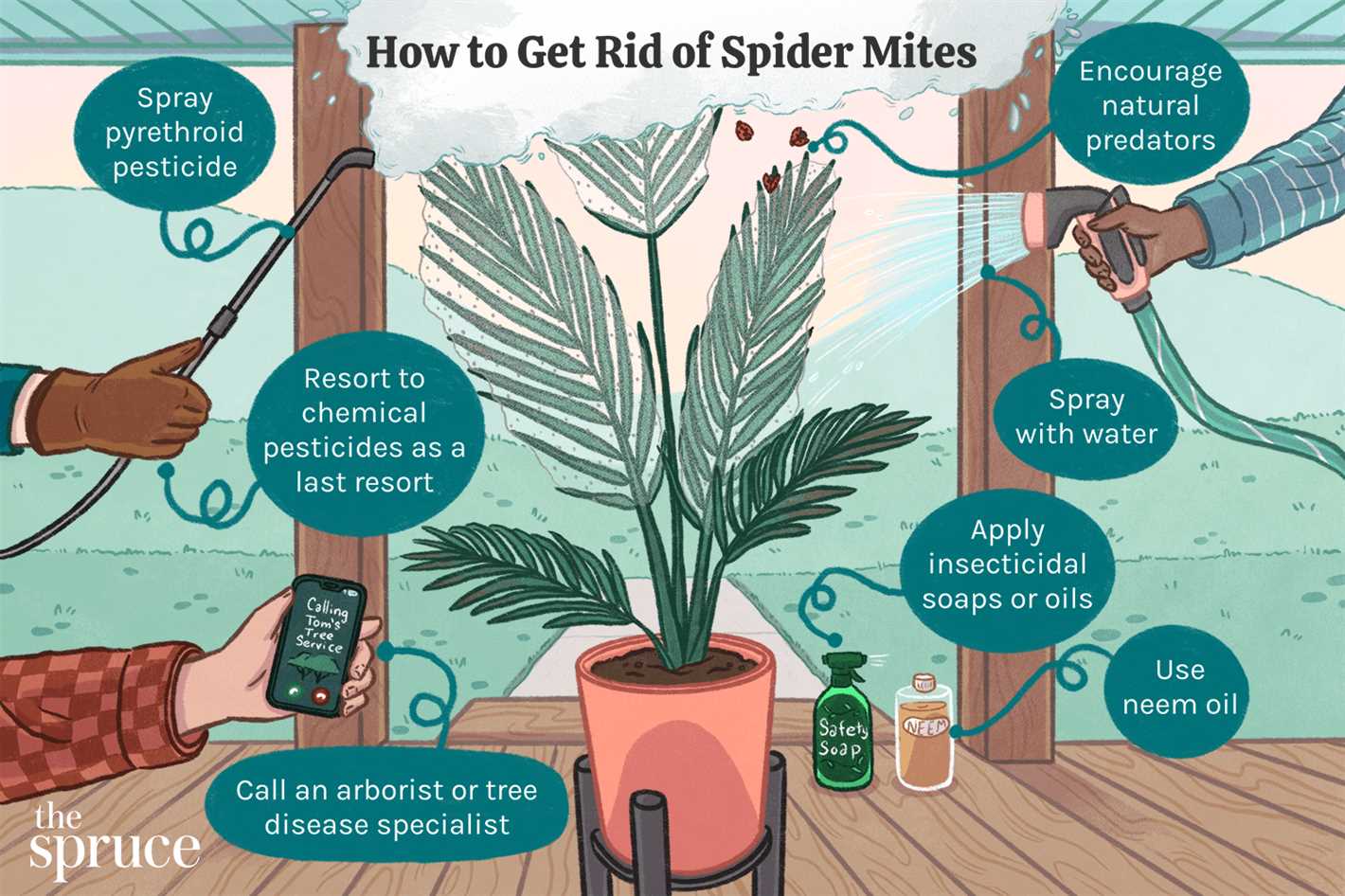
Companion planting involves growing certain plants together to help repel pests or attract beneficial insects. Some plants, such as marigolds, garlic, and chives, are known to deter spider mites and can be planted alongside susceptible crops to help prevent infestations. Additionally, attracting predator insects with nectar-rich flowers can also help control spider mite populations.
By adopting these organic spider mite control methods, gardeners and farmers can effectively manage infestations while minimizing harm to the environment and human health. It is important to choose the most appropriate method based on the specific circumstances and to monitor the effectiveness of the control measures regularly.
Monitoring and Regular Inspections for Spider Mite Infestations
Regular monitoring and inspections are crucial for effectively managing spider mite infestations. By regularly checking for signs of infestation, you can detect spider mites in the early stages and take appropriate action to prevent them from spreading and causing extensive damage to your plants.
Here are some steps you can take to monitor and inspect for spider mites:
- Visual Inspection: Start by visually inspecting your plants, paying close attention to the undersides of leaves where spider mites prefer to feed. Look for tiny specks or yellowing spots on the leaves, as well as fine webbing.
- Use a Hand Lens: A hand lens can help you magnify the leaves and easily spot the presence of spider mites, their eggs, or their webbing.
- Shake the Leaves: Another method is to gently shake the leaves or tap them over a white sheet of paper. This will dislodge any spider mites present, making them easier to spot against the white background.
- Leaf Damage: Examine the leaves for signs of damage such as stippling (tiny yellow spots caused by feeding), discoloration, or wilting. This can indicate the presence of spider mites.
- Monitoring Traps: Set up monitoring traps in your garden or greenhouse. These traps can be sticky cards or yellow sticky traps that attract and capture spider mites.
It is important to conduct regular inspections, especially during the warmer months when spider mite populations tend to increase. By detecting spider mite infestations early, you can take immediate action to prevent the pests from spreading and causing significant damage to your plants.
Remember, prevention is always better than treatment, so implementing good cultural practices such as maintaining proper plant hygiene, avoiding over-fertilization, and providing adequate air circulation can help reduce the risk of spider mite infestations.
| Signs | Description |
|---|---|
| Yellowing leaves | Leaves turn yellow, often starting from the bottom and progressing upwards. |
| Tiny specks or spots | Small dots or specks on the undersides of leaves, caused by spider mite feeding. |
| Fine webbing | Thin webbing on the undersides of leaves, usually between leaf veins. |
| Leaf stippling | Tiny yellow spots or stippling on the upper surfaces of leaves, caused by spider mite feeding. |
Q&A:
What are spider mites and why are they a problem?
Spider mites are tiny pests that belong to the arachnid family. They are a problem because they feed on plants by piercing the cells and sucking out the fluids, which can cause discoloration, wilting, and even death of the plants.
What are some signs of a spider mite infestation?
Some signs of a spider mite infestation include tiny webbing on the leaves, stippling or yellow speckling on the foliage, wilting or drooping of the leaves, and increased presence of other pests, such as ants.
How can I prevent spider mite infestations in my garden?
To prevent spider mite infestations in your garden, you can take several measures, such as regularly inspecting your plants, practicing good plant hygiene, providing adequate airflow, and maintaining a healthy garden ecosystem.
What are some natural predators of spider mites?
Some natural predators of spider mites include ladybugs, lacewings, predatory mites, and predatory beetles. These predators feed on spider mites and help to keep their population in check.
What are some chemical control options for spider mites?
There are several chemical control options for spider mites, such as miticides and insecticides. It is important to carefully read and follow the instructions on the product label when using chemical control options.
Can spider mites cause harm to humans?
Spider mites are generally not harmful to humans. However, their bites can cause skin irritation and allergic reactions in some people. It is best to avoid direct contact with spider mites if possible and to take necessary precautions when working in infested areas.
How long does it take to get rid of a spider mite infestation?
The time it takes to get rid of a spider mite infestation can vary depending on the severity of the infestation and the control measures taken. It may take several weeks to completely eliminate spider mites from an infested area.
Video:
Get Rid of Spider Mites







